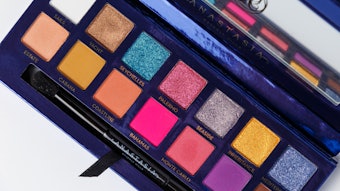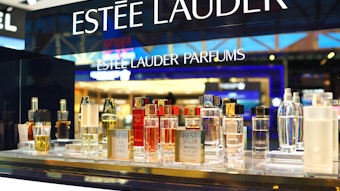- As the multifunctional trend grows, more beauty products are crossing categories—skin care benefits and color cosmetics in hair care products, color in skin care and body care and vice versa—and this can pose challenges to brand marketers.
- In creating multifunctional cross-category products, brands should target ingredients that offer multiple benefits or a lot of bang for their buck, as they help offer results and tell the story of the product itself—at reasonable price points.
- In marketing products that have a variety of attributes, strategies can vary—but it’s hard to go wrong with focusing on your key selling point and surprising consumers with additional benefits after the fact.
Multifunctional products are one of the biggest trends to hit the beauty industry in recent years, starting with the significant influx of BB cream products and growing from there.
“The consumer mega trend of convenience is having a big impact in the market, driving the success of products such as the BB, CC and DD creams, as these products combine the benefits of skin and sun care with color cosmetics in one easy product,” comments Jennifer Donahue, marketing manager, skin care and color cosmetics, Croda Inc. Thus, these product combinations have led to a lot of cross beauty category product blurring.
Shannon Romanowski, senior beauty and personal care analyst, Mintel, notes, “Lines are primarily blurring between facial skin care and color cosmetics, driven by the popularity of BB creams and CC creams. The coverage benefits offered by these products makes them appealing, and BB/CC creams appear to be stealing share from more traditional coverage makeup such as foundation.”
She continues, “We are also seeing lines blur between different segments within facial skin care. Facial skin care products are continuing to offer numerous benefits—whether from BB/CC creams or even treatment or moisturizer types of products. As facial skin care products become more comprehensive, it appears to be negatively impacting specialized skin care treatments such as anti-aging skin care and skin-fading products.”
Clearly, the skin care market is lending its credentials for developing and maintaining healthy skin to categories such as body care, color cosmetics and even hair care. “Currently, we’re seeing skin care being increasingly factored into personal care products, influencing innovation in categories such as hair care and cosmetics,” shares Jamie Mills, associate analyst, Datamonitor. And Romanowski notes, “Alphabet creams are turning up everywhere, including hair styling products and body lotions. Jergens was one of the first mass brands to launch a body BB cream in early 2014, which is lightly tinted for coverage while still moisturizing.”
And Miller expands on the growing multifunctionality of hair care products, saying, “We are now seeing a new approach to innovation with a greater focus on nurturing and maintaining a healthy scalp as opposed to using a product for a specific condition. Products such as Clear Scalp & Hair Therapy by Unilever and Aveda’s Invati Scalp Revitalizer both cater to growing interest in caring for the scalp and [the idea that] keeping the scalp healthy is the key to healthy hair. Hair care launches during the past three years that also targeted scalp care and health were mainly in the Asia-Pacific region. However, we are now seeing a migration of such products to Western markets. Therefore, I think products that blur category lines are becoming a universal demand across all geographies and consumer groups.”
Development Deals
Developing multifunctional products often requires multifunctional ingredients. As Donahue comments, “Ingredients that are multifunctional are perfect in these formats. Because there are sometimes four to five product claims, a blend of two to three multifunctional actives is an efficient approach.”
Anurag Pande, PhD, vice president of scientific affairs, Sabinsa, also shares, “Though it is not necessary for the individual ingredients to be multifunctional, having multifunctional extracts can be of great benefits as they reduce the number of the individual ingredients in the formulation, lower the interaction possibilities between the individual components and also make [formulating] easier and formulations more stable.” He also explains, “It is important to make sure that the individual ingredients, whether synthetic or natural, should not have any harmful interactions affecting the stability or functionality of the formulation. Any synergistic activity, on the other hand, can be helpful.”
So what kind of ingredients should product developers be on the lookout for? “Croda offers many multifunctional ingredients, like our Solaveil SpeXtra inorganic UV absorbers, which offer skin care, sun care and color cosmetic benefits,” says Donahue. And Pande points out Sabinsa’s PteroWhite is “an excellent polyphenolic antioxidant that also shows a strong activity against the tyrosinase enzyme, hence can be used in skin [brightening] formulations,” while Sabinsa’s TetraPure “is not only a strong antioxidant and skin [brightening] agent but also has an excellent antifungal activity.”
In developing the signature product for her beauty brand, which offers color and skin care benefits, GlamNatural co-owner Christine Vadala says, “GlamNatural’s Hydrating Foundation is a product that blurs the traditional category line because our formula is almost 70% shea butter, so you can skip your daily moisturizing step. The butter and oils in our foundation absorb and protect the skin while the colors stay on top of the skin’s surface naturally. We started out with a simple formulation: shea butter and color. These two components alone do not produce high-performance, quality makeup however. As we continued to formulate, we choose chemicals that met our BodySafe criteria and increase the performance of our makeup. This product started out having one benefit, but the need for higher performance gave us the opportunity to add more benefits.”
Judith August, founder and creator of Judith August Cosmetic Solutions, which provides color cosmetic products aimed to camouflage skin conditions and post skin care procedure issues, shares, “We put in what can be beneficial and helpful. Like for the EraseZit [an acne and blemish concealer pencil], tea tree oil and camphor plus the color and the coverage equals the results.”
And in the development of a product, you could find you have more than you thought. Michael York, CEO of Senté Labs, makers of Senté Dermal Repair Cream, which offers skin care and wound-healing benefits as well as anti-aging properties, notes the brand’s cream is based on glycosaminoglycans, which play an important role in upholding the infrastructure of the skin. “As it specifically relates to Senté Dermal Repair Cream, the initial focus was on the healing benefits because the [cream’s] heparan sulfate molecule had proven wound-healing benefits in other formulations,” York explains. “If we could develop a topical product with the ability to penetrate to the deeper layers of the skin, the natural thought was this would make a great post-procedure skin care product that would support a more rapid recovery of compromised skin after common dermatologic procedures. What we found once we had a finished product was not only was it a great product for post-procedure healing but also had excellent benefits to address multiple skin concerns such as redness, pigmentation and fine lines.”
Telling the Straight Story
When your product offers multiple benefits, it can be a challenge for marketing. Do you pick one benefit and promote just that, or market the multifunctionality? Target different benefits for different consumers? While the recent BB/CC trend has shown consumers have a penchant for products that can address many skin care concerns, it’s still up to the brand owners to figure out how to convince consumers to buy.
Datamonitor’s Miller notes, “Although consumers place high value on efficacy, I believe that convenience and value for money are gaining ground in terms of consumer priorities—making multifunctional products an increasingly appealing option. However, the real challenge lies with the brand being able to reassure consumers that multi-benefit, all-in-one solutions are just as effective as single-benefit products, as they may be perceived to have diluted efficiency due to the number of benefits included.”
Of the BB/CC cream trend, Romanowski explains, “Time and money and value are primary reasons these products have exploded in popularity. According to Mintel’s research, 30% of facial skin care users think multifunctional skin care products save them time, and 26% think multifunctional products save them money. Facial skin care consumers, in particular, are results-driven, and the attitude of ‘the more benefits the better’ seems to be driving interest.” However, she also points out, “It really is product dependent, [as] multiple-benefit products do run the risk of overpromising and under delivering.”
For August, it’s important to perform well on the brand’s main selling point. She notes, “We have camouflage [makeup] for all different types of situations. It’s not one size fits all. Everybody has a different problem and a different skin color and different issues—but our ultimate goal is to have the best coverage, period. Then it’s [about the] color.”
York also comments, “The major challenge with these types of products is to figure out how to effectively position the products in the crowded skin care market space. We have chosen to position Senté Dermal Repair Cream as an age management product that can be used with any other product lines that the customer is currently using, as opposed to trying to get the customers to discontinue their current products in order to fit Senté Dermal Repair Cream into their [routine].”
He continues, “Consumers want two things when they purchase skin care products: visual results and for their skin to feel healthy, which is to say they want their skin to look good and feel good. Not all consumers have the same skin issues, but the most common challenges with aging skin are dryness, fine lines, redness and uneven skin tone. Although the evidence is clear and compelling [enough] for Senté Dermal Repair Cream that we could make multiple claims, we focus on what is most important for consumers—Senté Dermal Repair Cream addresses the signs of aging while making your skin feel healthy and hydrated.”
For marketing her multifunctional product, Vadala explains, “Since this is a unique product that has a unique application, it’s imperative that we teach our customers the proper application. This product does not contain water, therefore it is highly concentrated and will initially seem thicker. We have addressed this challenge by creating an online tutorial videos and marketing pieces that speak to this distinct technique.”
Additionally, she comments, “Our multiple claims fall under our BodySafe umbrella. To qualify as BodySafe, all products must be vegan, gluten free, cruelty free, hypo-allergenic, talc free, formaldehyde free, mineral free, petroleum free, harmful emulsifier free, phthalate free, synthetic dye free, fragrance free and sodium lauryl sulfate free. Consumers can identify this symbol on all our packaging. When I look at the marketing campaigns that support alphabet creams, there seems to be this industry frenzy to improve the improvement. Although our product currently falls into this category, we don’t claim the trend. I believe the overall philosophy of high-quality ingredients and high-performance, healthy beauty products is more likely the future of this industry.”
Multifunctional Moving Ahead
As consumers expect their beauty products to provide more benefits while still being straightforward, the multifunctional rise will likely continue. But smart development on the part of product developers is unquestionably necessary. “The concept of BB and CC cream is definitely catching up with lot of formulators looking to create similar formulations using the natural extracts with proven efficacy and safety,” says Pande. “The high purity ensures that these individual ingredients need to be added in a small concentration at which they still retain their efficacy. And before long, we’ll see more natural extracts getting into mainstream multifunctional formulations.”
Donahue surmises, “The convenience trend is here to stay, and it will continue to drive development of ingredients that can serve multiple roles in a formulation. This trend, combined with the increase in regulatory restrictions, will lead to the investigation of new claims from current functional ingredients.”
And as for more products that are truly charging across beauty lines, Miller predicts, “In terms of cross category products, especially more creative ones such as hair chalk, they will definitely continue to engage consumers through the novelty aspect, as well as a desire to experiment with both their appearance and new products.”










